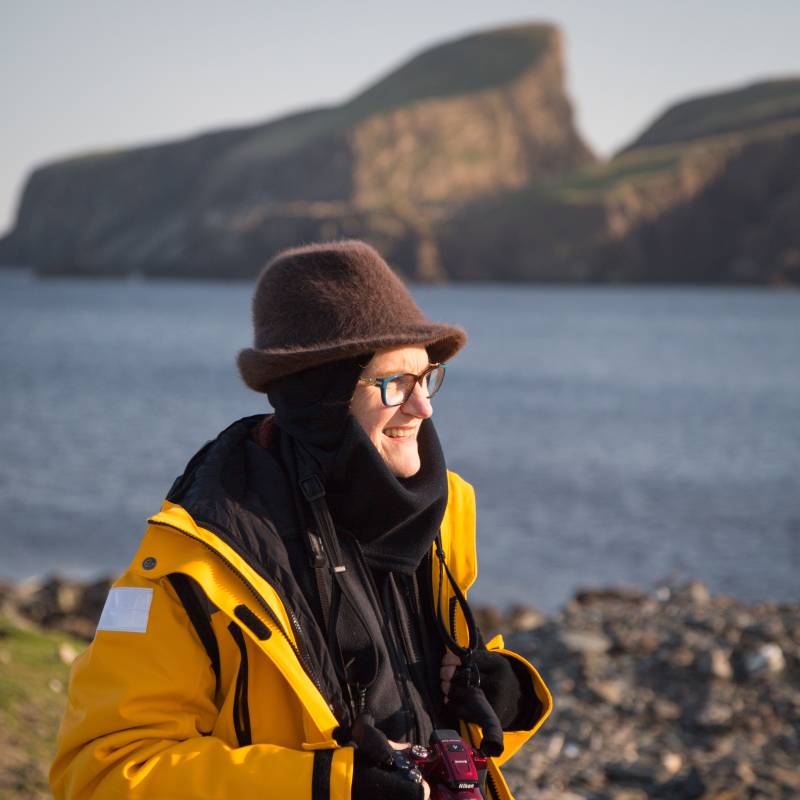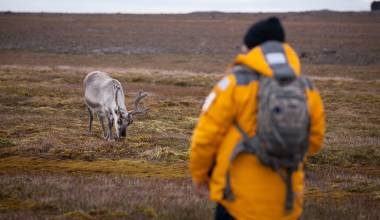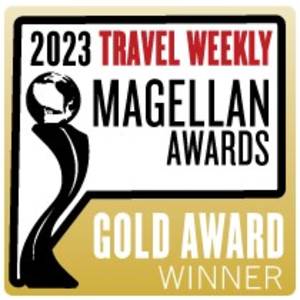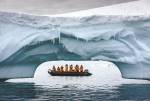Midnight sun and freezing winters
One of the most untouched regions in the world, the Arctic is home to awe-inspiring sights – the dancing Northern lights, majestic glaciers, unique landscapes, and rich biodiversity. That’s not all – a trip to the Arctic allows you an in-depth understanding of the lives and culture of the Inuit and other indigenous people, vastly different from the rest of the world.
The region could well be on top of your list, but with extreme temperatures and distinct weather patterns, it is essential to learn the best time to visit the Arctic.
As with any other destination, the best time for an Arctic Cruise depends on which part of the Arctic Circle you want to visit and what activities and experiences you want to sign up for. Most North Pole cruises operate from May to September. The most popular months to visit the region are July and August although you can travel to Spitsbergen as early as May and Greenland as late as October.
Best Time To Visit
overview
we recommend
- It’s one of the best months to view the Northern lights from Iceland, Norway or Russia
overview
we recommend
- Lace-up for a snowshoeing adventure or ice fishing tour in Ilulissat, Greenland, or in Finland
overview
we recommend
- Set off on a snowmobiling tour – a great way to appreciate the region’s unique landscape
overview
we recommend
- Hop on for an exhilarating husky-pulled sled ride through the snow-laden wildernesses
overview
we recommend
- Witness the ethereal beauty of glaciers and mountains at the Svalbard archipelago
- Experience the thrill of spotting the King of the Arctic – the polar bear
overview
we recommend
- It’s the best time to view the unicorns of the sea – narwhals
- Be witness to a walrus haul-out, when they haul-out onto land and ice to rest and reproduce
- Take an ice-breaker cruise to experience what it feels like to stand on the ‘Top of the World’ at the North Pole
overview
we recommend
- Keep your camera ready to capture the rich biodiversity of the Novaya Zemlya region – polar bears, reindeers and Arctic foxes, and an incredible variety of birds
- It’s beluga season at Hudson Bay in Canada
overview
we recommend
- Meet the Inuit people and experience the beauty of their lands as you sail the waters of the Northwest Passage
- Visit the iceberg capital of the world – the UNESCO World Heritage site of Ilulissat Icefjord
overview
we recommend
- Suit up and go glacier hiking
- Head out on a Zodiac boat excursion and get up close to glaciers and wildlife
overview
we recommend
- Visit Churchill, Canada, during the month to improve your chances of spotting polar bears
overview
we recommend
- Polar bear activity continues in Churchill, Canada
overview
we recommend
- Celebrate a White Christmas at Santa’s hometown in Rovaniemi in Finland, situated right on the Arctic Circle
Best Time to Visit the Arctic by Season
Spring: While the general perception of the Arctic is that of a land with a year-long winter, the region actually has distinct seasons and dramatically different landscapes during each of these periods. The first signs of life start to show up in early spring, i.e, March and April when polar bears emerge from their dens with their cubs. The ice is still thick, and it’s a great time to view enormous icebergs and the Northern Lights. Depending on where you go, temperatures range from -20°F to 5°F. Cruise ships start operations by May with abundant wildlife viewing opportunities. This period is known as floe edge season, where the open waters meet the ice that is still attached to the shoreline. This presents excellent opportunities to spot narwhals, bowhead, and beluga whales. Temperatures are warmer during May and June, around 26°F to 50°F, though it can feel a lot warmer due to extended daylight hours.
Summer: Summer runs from July to August and is the busiest time of the year. With temperatures ranging from 50°F to 70°F and the ice has melted, travelers can participate in a range of outdoor activities including kayaking, trekking, glacier hiking, and ice fishing.
Fall: The months of October and November are a period of transition – the landscape changes color to acknowledge the arrival of fall. Temperatures drop (4°F to 23°F), daylight hours decrease as the weeks go by, and the ice starts to build up. It’s the best time for polar bear viewing.
Winter: The region is covered with a thick blanket of snow during winter, from December to February, with temperatures well below freezing point. While most cruises stop plying by the end of October, those willing to brave the cold will be rewarded with surreal icescapes and the best chances to view the dancing Aurora Borealis or Northern Lights.

What to Pack for the Arctic
Due to its extreme and often harsh weather conditions, what you pack for your Arctic trip or polar cruise becomes extremely important.
Suggested Clothing
The most important aspect of packing clothing for the Arctic is getting ‘layers.’ With vast temperature differences, layers allow you to dress up or down.
- Clothing made from high wicking material such as merino wool.
- Warm base layers or thermal wear that is snug
- Lightweight, quick-dry, long sleeve T-shirts or shirts
- A warm fleece with a hood
- A waterproof jacket
- A thick, wind-resistant parka
- Wind, water-resistant, and quick-drying trousers with a fleece lining on the inside
Footwear
- Kneehigh, waterproof rubber boots
- Several pairs of thermal socks
- Sturdy shoes with good grip for deck viewing activities
- Sandals for inside the cruise
Other accessories
- Fleece-lined beanies
- Headbands and balaclavas
- High-quality sunglasses that block out UVA, B, and C rays
- Liner gloves
- High quality, thick gloves
- Sunscreen with an SPF factor of greater than 30
- Hiking poles
- Camera, tripod and binoculars
Is the Arctic on your bucket list? Get in touch with our experts for a tailor-made tour of the ‘top of the world’!

Popular Trips to the Arctic

Northeast Greenland: Glaciers, Fjords and the Northern Lights

Svalbard Explorer: Best of High Arctic Norway

Gems of West Greenland: Fjords, Icebergs and Culture
Sorry, your search found no results.
Our Awards













